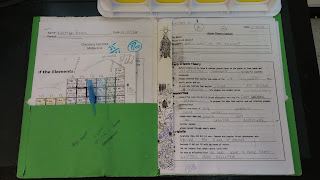This year I am making it a focus to take good care of myself. I started practicing intentional self-care last year, and it was by far my best teaching/mom year yet! I avoided feeling overwhelmed, I managed to take less work home and my class routines and management seemed to flow more smoothly! I wanted to share with you some of the things I did, along with some other ideas for self-care.
Want a handy printable? Grab it here!
At Your Desk
I love keeping something special in my desk or
filing cabinet for when the going gets rough! And since I am known to hoard treats, other teachers often come to visit! Here are some of the things I like to keep:
- Tea or hot chocolate (I have the whole set up- teas, electric kettle, sugar, creamer, extra mugs!)
- Chocolate (usually Hershey kisses, but sometimes mini-candy bars)
- Healthy snacks (granola bars, goldfish, dried fruit packs)
I also keep things that make me happy on my desk in a special space. Pictures of my kids, a candle, potted plants, little science-y knick-knacks. It makes a little calming space for me to rest my eyes.
At Home
Make sure to schedule some time for your own hobbies! I dedicate time 3 days a week to run (about an hour total), then the other 2 days are for cleaning (this only takes about 30-45 minutes and it makes me feel better!) I also want to set aside time this year for sewing and baking (my two favorite hobbies).
Spend time with loved ones/ animals- or
both! Take your kids and dogs for a walk! Go to the park, play a game. I like
to do mini projects with my girls or walk around the block to get my 10,000
steps in. I actually have an app on my phone (Offtime) that blocks other apps, so I can focus on what I am doing. I set it for when I go to pick up the girls, to right after they are supposed to be in bed. I also set it for bedtime to after the girls have been dropped off, so that I am not distracted in the morning.Make sure to schedule some time for your own hobbies! I dedicate time 3 days a week to run (about an hour total), then the other 2 days are for cleaning (this only takes about 30-45 minutes and it makes me feel better!) I also want to set aside time this year for sewing and baking (my two favorite hobbies).
If you have time- volunteer! I rarely have time, but I do like to give money and goods to different charities. I donate in person or I write a paper check- it makes me feel more connected. I do a sweep of our house, toys and clothes every 6 months and donate them to a children's charity and Goodwill. Good karma and a clean-ish house!
Relax and do nothing! Watch mindless tv, read (non-pd!), listen to music, take a long soak!
At School
Connect with other teachers! Don’t get stuck in your room- make the effort and go visit! I have social anxiety so this is hard for me, but I try to pop in and be non-intrusive. Usually I bring something by the first few times (hey, I made cookies, would you like one?), and occasionally afterward. Also, invite them on walks as well!
Again, social anxiety, but making positive phone calls can be relaxing and bring on a rush of endorphin! Parents are always surprised and delighted by positive phone calls. Bonus points if it is a usually “bad” kid!
Get something crossed off your to-do list! I don't know about you, but I have Post-its stuck all over my desk of things to do! I find one that can be done pretty quickly and cross it off! The good feeling of getting something done (usually a boring, mundane task is awesome!
Keep special notes in an accessible place- I usually pin them onto a bulletin board behind my desk. Seeing the wall fill up over the years has been very heartening!
During a prep or at your lunch, take a few moments to do some yoga or stretching. Or take a walk around your school (inside or outside!) There are many different apps for short yoga- I have been using a 7 minute Yoga app, and it is the perfect amount of time!
So there you have it- all my tips and tricks that have helped me take better care of me! Now, just make sure to take care of yourself this year!
Let me know what sort of self-care gets you through the year in the comments section below!








































